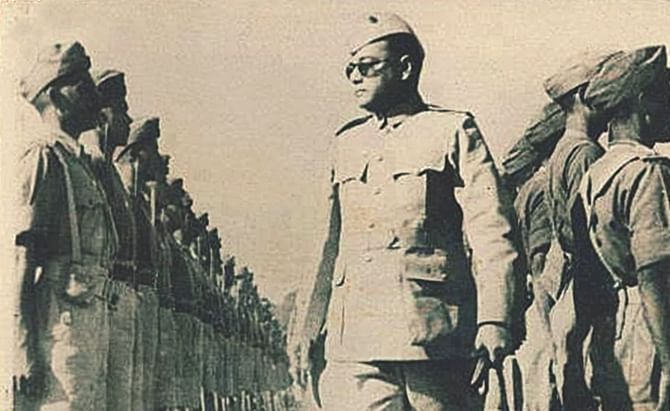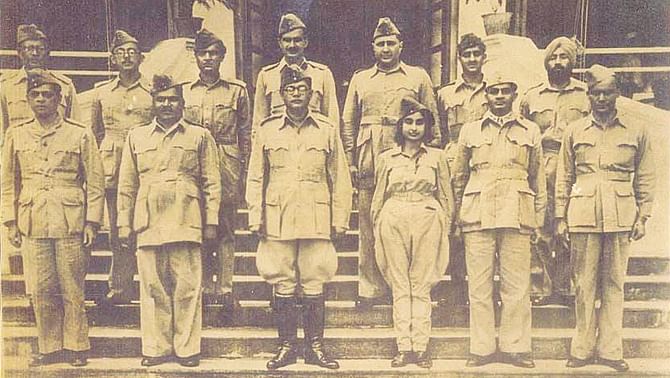A Saint with no name
A Saint with no name

Thirteen people were present during a cremation at Guptar Ghat on the bank of Saryu River flowing through Uttarakhand and Uttar Pradesh. It was on September 18, 1985. When the pyre was lit, one of the 13 cried out, "…there should have been 13 lakh people here!"
This is the story of Gumnami Baba, a saint with a lost name, also known as Bhagwanji of Faizabad. He was reported to have come to Faizabad in the 70s and was first reported to the police by a local in 1977 for his “suspicious” activities.
He started living as a lodger at Rambhawan in 1983. Gurubasant Singh, his landlord, remembers the day when a physician, Dr RP Mishra, walked in and booked two rooms of the house for his “grandfather” and two caretakers.
Bhagwanji was very secretive in his ways. His rooms were to the back of the main house and could be reached through a narrow lane next to the main pathway. Another passage led from the rooms through the backyard and towards the cantonment. People, including army and police officials, who used to visit him at night, could walk in without being noticed.

Even Gurubasant never met Bhagwanji face-to-face. "I heard him speak ...His voice was heavy and crisp, like that of a military general… But he was always behind a curtain."
The saint, aged over 80, needed medical care. Dr Mishra and two other physicians -- Dr T Banerjee and his son Dr Priyabrat Banerjee -- were always there for him.
Priyabrat in an interview with HindustanTimes.com recalls that the mysterious saint once said, "Dekho to, kahi main Subhas Chandra Bose to nahi hoon?" (Look, am I not Subhas Chandra Bose?)
On another occasion, the old man said, "Despite having a nation I have none, despite having a home I am homeless, despite having a people, I have no one…"
Durga Prasad Pandey, who was Netaji's companion for many years, also recalls a meeting when Bhagwanji said: "Take me to be Netaji if you will."
Srikant Sharma, who was among the few to have met Bhagwanji face-to-face, says the saint said told him many personal things about Netaji and also about the great escape from Kolkata to Berlin in 1941.
The UP government has 24 big boxes that contain Gumnami Baba's personal belongings. All these boxes are secured under double locks put by Faizabad Treasury.
The articles include round frame spectacles, Belgian typewriters, many newspapers of pre-independence and post-independence time with Baba's comments scribbled on them, boxes full of books of international relevance, several books gifted by 'sister', cigars from Germany and Italy, and some huge-size family photographs.
One of the items was a letter addressed to a man called Prasad. In the seven-page letter, Bhagwanji refers to the commissions formed to probe Netaji mystery, saying there is "no point in constituting loaded dice commissions to find out what happened to him… his death is …an impregnable mystery…"
Leela Roy, freedom fighter and social worker, was in constant touch with Bhagwanji from 1963 to 1970 till her death. On 25 March 1963, Bhagwanji asked one of his trusted man to convey Leela: “My coming out is not in country's interest. It would not do anyone any good if I emerged now.”
After her death in 1970, Bhagwanji paid her homage through a letter; its handwriting reportedly matches with that of Netaji.
Many such stories (for example, he used to mentioned Sarat Bose, Netaji's elder brother, as 'mejda') do round even today. After his death in 1985, the stories were splashed on the first pages of many local newspapers. The news even travelled to Parliament, although soon after - and quite strangely - the stories got spiked.
Of many questions, the big one was about his cremation. After his death on September 16, 1985, people were physically prevented from entering the house by his followers. Even Gurubasant was stopped at the door. The body was kept in the house for two days after which his confidants draped his body in a tricolour and took his body in a van to Guptar Ghat.
There was an interesting development in 2010 when Justice Mukherjee's comments made off-the-record to independent filmmaker Amlan Ghosh. The former Supreme Court judge, who led a commission to probe Netaji mystery, said he was “100 percent” sure that Bhagwanji was Netaji.
On January 31, 2013, a new chapter was opened with the Allahabad High Court directing the Uttar Pradesh government to consider constituting an inquiry headed by a retired judge into the Bhagwanji episode.
“It is not my claim that Bhagwanji of Faizabad was Netaji,” said Anuj Dhar, who has recently released his book on Netaji, “India's Biggest Cover Up.”
“All I am saying is that I probed the matter as a journalist and have found reasons that the possibility cannot be ruled out. For example, the handwritings of this man in English and Bangla matched with Netaji's and that constitutes -- like it or not -- a direct evidence of Bose's remaining alive decades after his reported death,” he said in an interview with Zeenews.
“If the counter argument is that the Faizabad holy man's DNA test was negative, I have explained in the book that the same cannot be relied on as the test was conducted in a lab controlled by the Government whose agenda from the day one was to cover-up the matter.”
Bhagwanji reportedly claimed he spent some years in a gulag and left Russia in 1949 and got engaged in covert activities to counter world powers, especially America's, clout in Asia.
He might have feared that if he came out in the open, the world powers would go after him and Indians will be caught in crossfire. If there is any truth in Bhagwanji's claims, several governments and their intelligence agencies would have files on him, added Dhar, also a well-known Indian journalist.
“But we cannot expect to get these files so long as our own government continues to sit on its own pile of secret files on Netaji.”
Source: Indian media reports, Anuj Dhar's articles, missionnetaji.org